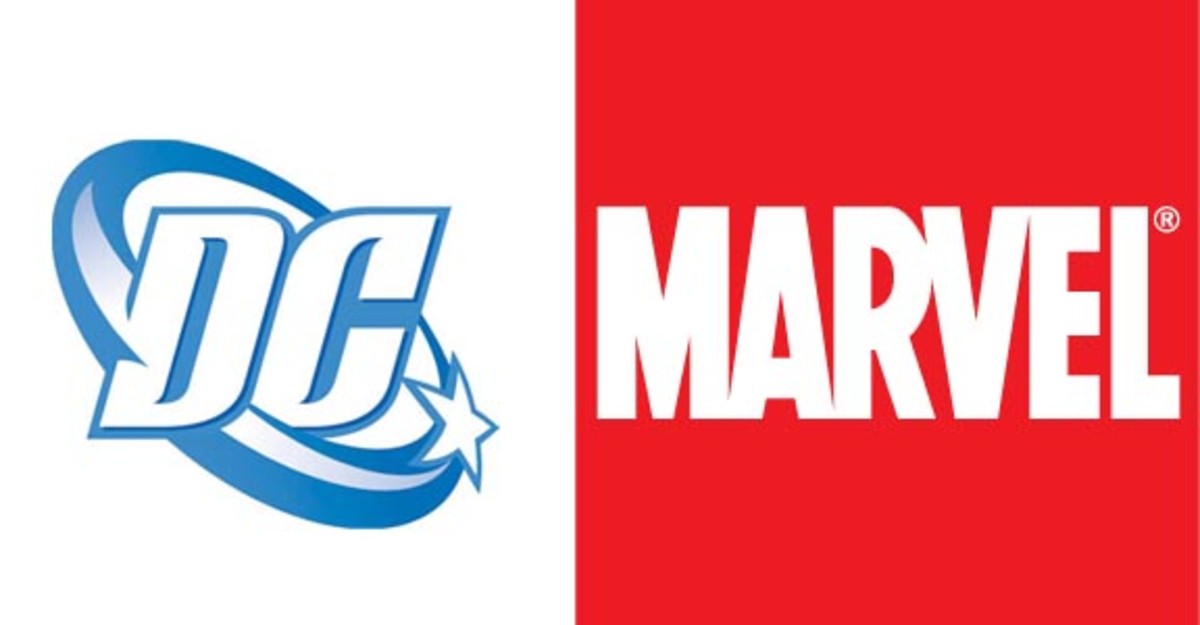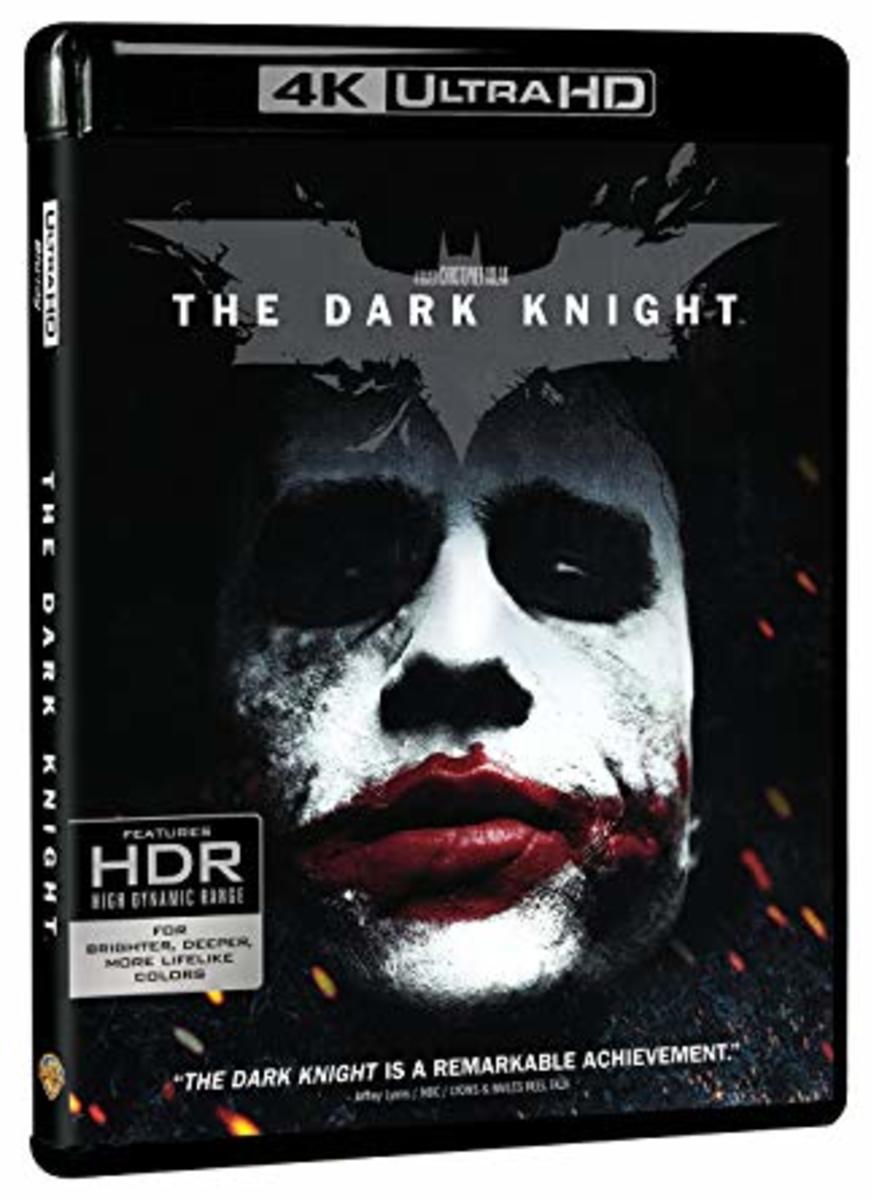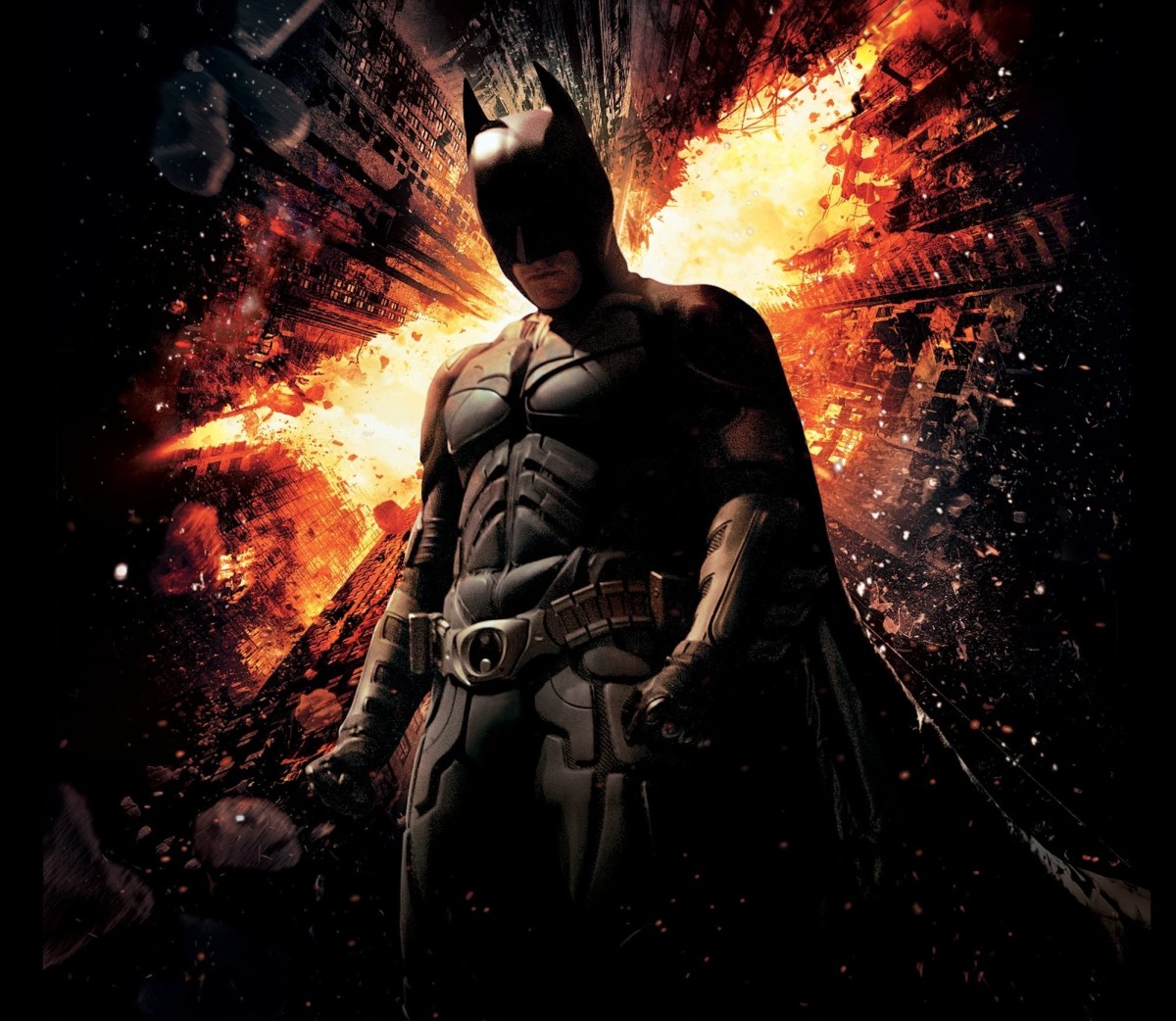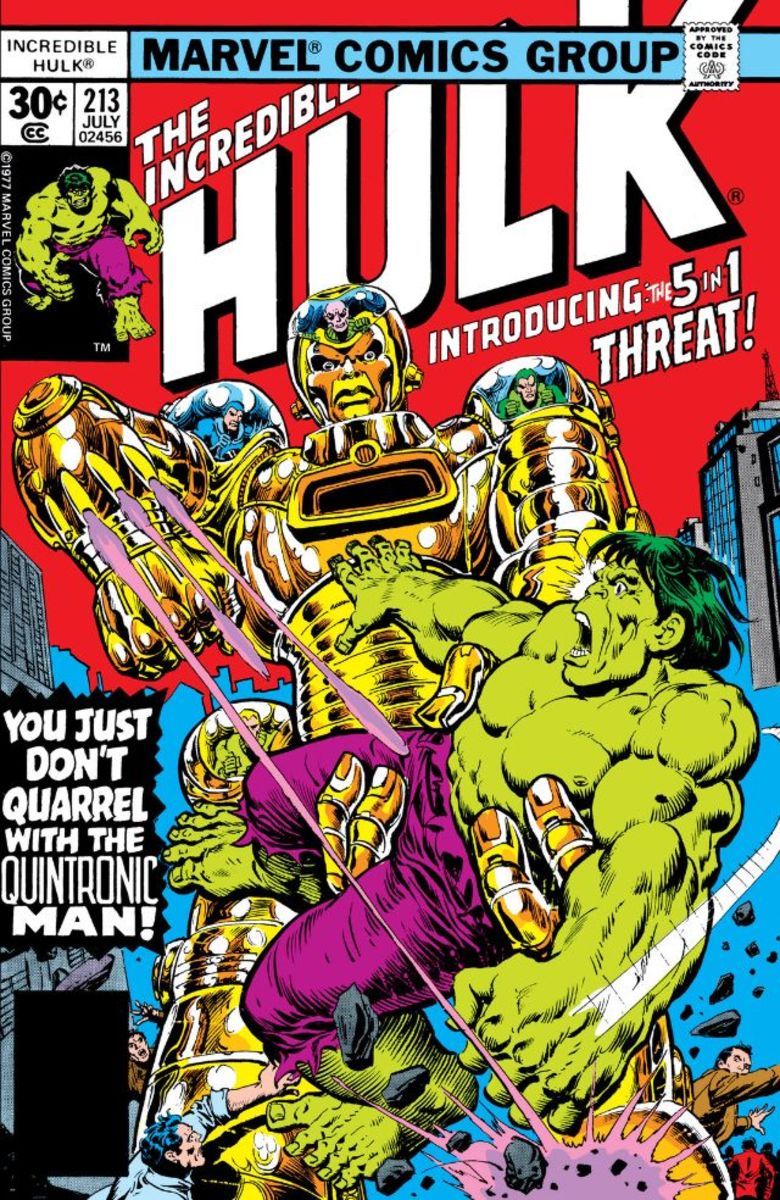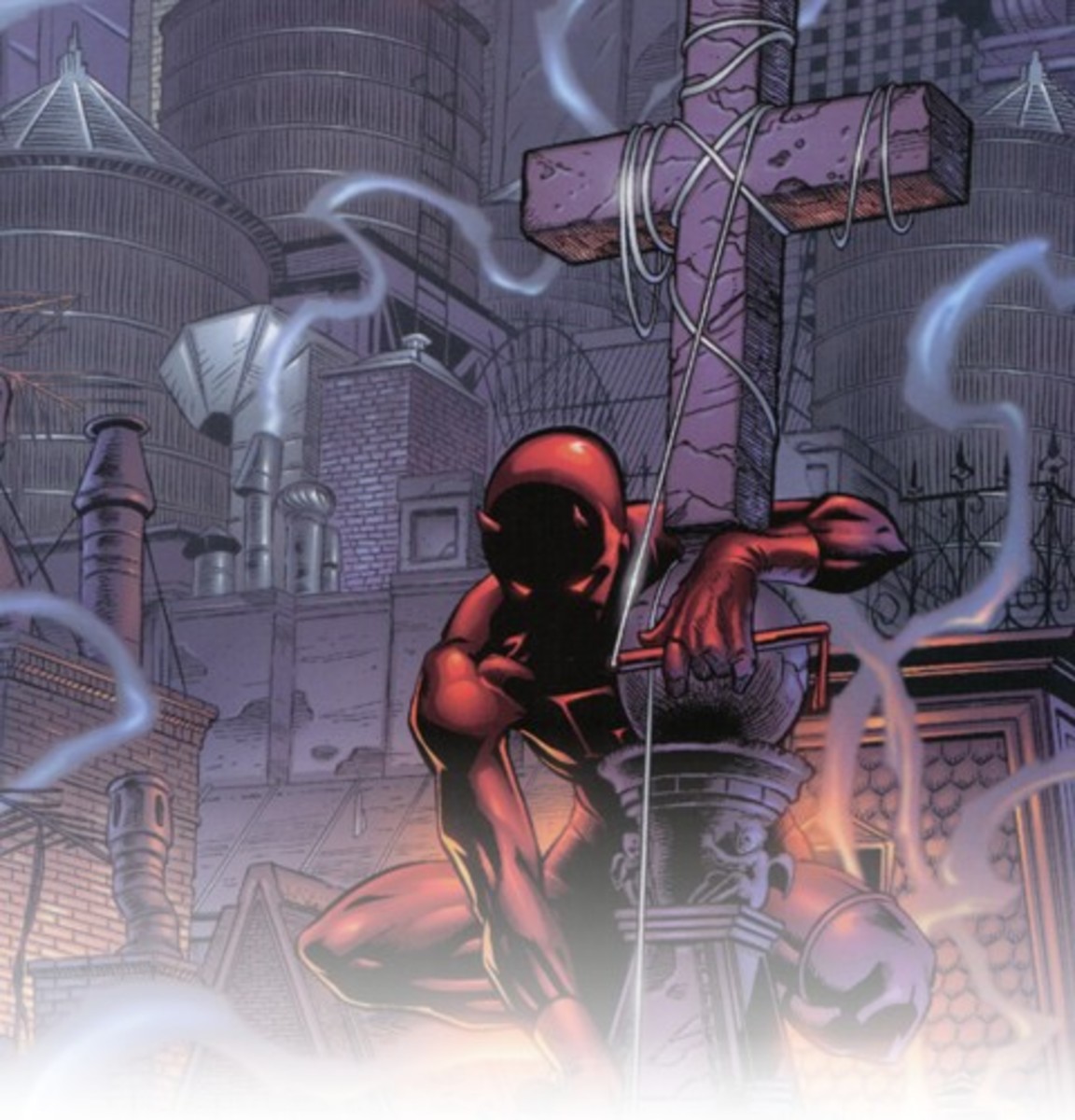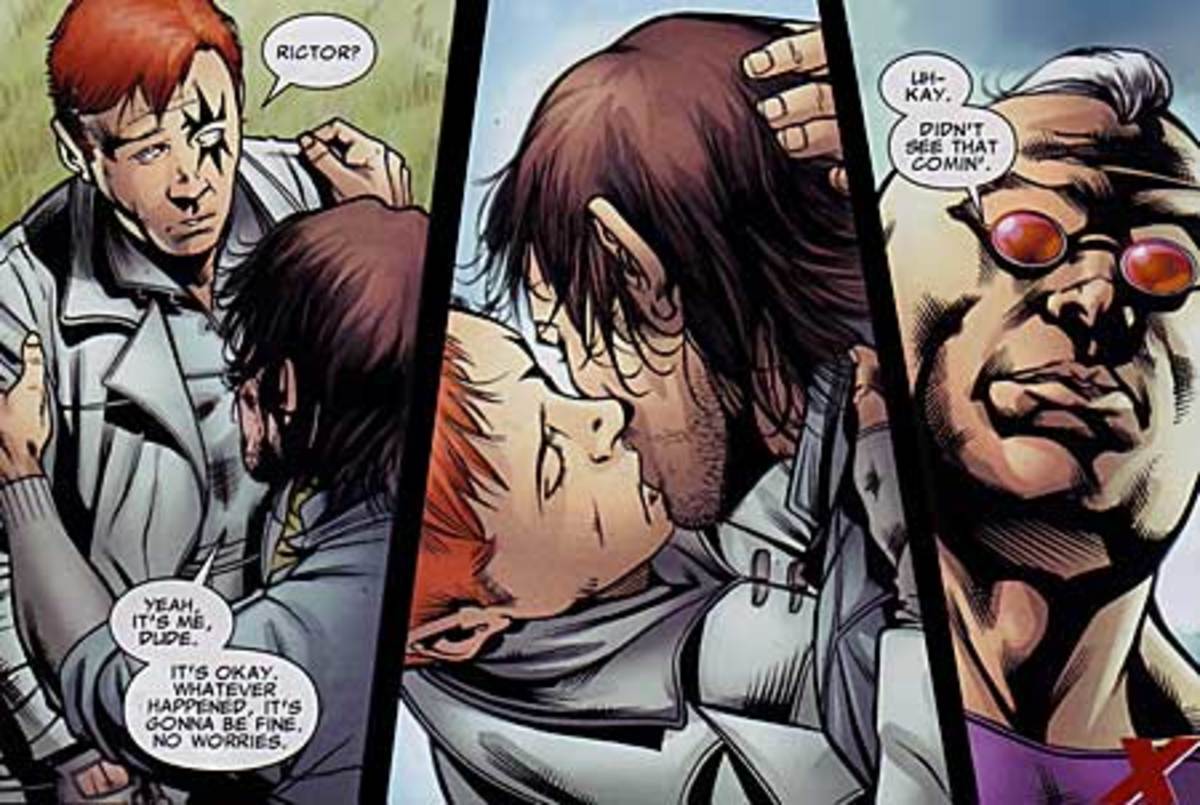Batman: Through The Years
The Birth Of "The Bat-Man"
In 1939, the success of Superman prompted editors at the comic book division of National Publications (later DC Comics) to create more superheros for their comics. So, Bob Kane created "the Bat-Man". Co-creator (uncredited) Bill Finger recalled "Kane had an idea for a character called 'Batman', and he'd like me to see the drawings. I went over to Kane's, and he had drawn a character who looked very much like Superman with kind of … reddish tights, I believe, with boots … no gloves, no gauntlets … with a small domino mask, swinging on a rope. He had two stiff wings that were sticking out, looking like bat wings. And under it was a big sign … BATMAN."
Kane, in his 1989 autobiography, detailed Finger's contributions to Batman's creation:
One day I called Bill and said, 'I have a new character called the Bat-Man and I've made some crude, elementary sketches I'd like you to look at'. He came over and I showed him the drawings. At the time, I only had a small domino mask, like the one Robin later wore, on Batman's face. Bill said, 'Why not make him look more like a bat and put a hood on him, and take the eyeballs out and just put slits for eyes to make him look more mysterious?' At this point, the Bat-Man wore a red union suit; the wings, trunks, and mask were black. I thought that red and black would be a good combination. Bill said that the costume was too bright: 'Color it dark gray to make it look more ominous'. The cape looked like two stiff bat wings attached to his arms. As Bill and I talked, we realized that these wings would get cumbersome when Bat-Man was in action, and changed them into a cape, scalloped to look like bat wings when he was fighting or swinging down on a rope. Also, he didn't have any gloves on, and we added them so that he wouldn't leave fingerprints.
In May 1939, The Bat-Man was born, In a 10 cent comic book, Detective Comics issue # 27. Batman was an instant hit, by 1940 he had his very own comic book.
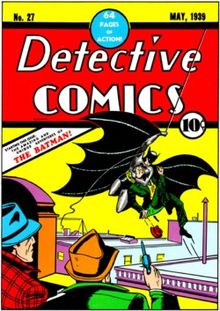
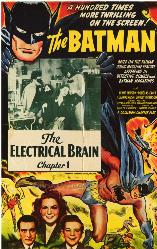
The Batman Serial
Batman was a 15-chapter serial released in 1943 by Columbia Pictures. The serial starred Lewis Wilson as Batman and Douglas Croft as Robin. J. Carrol Naish played the villain, an original character named Dr. Daka. Rounding out the cast were Shirley Patterson as Linda Page (Bruce Wayne's love interest), and William Austin as Alfred. The plot is based on Batman, a US government agent, attempting to defeat the Japanese agent Dr. Daka, at the height of World War II.
The film is notable for being the first filmed appearance of Batman and for providing two core elements of the Batman mythos. The film introduced "The Bat's Cave" and the Grandfather clock entrance. The name was altered to the Batcave in the comic.
Batman and Robin Serial
Batman and Robin was another 15-chapter serial film released in 1949
by Columbia Pictures. Robert Lowery played Batman, while Johnny Duncan played Robin. Supporting
players included Jane Adams as Vicki
Vale and veteran character actor Lyle
Talbot as Commissioner Gordon. The plot dealt
with the Dynamic Duo facing off against the Wizard, a hooded villain
whose identity remains a mystery throughout the serial until the end.
Batman in the 50s
During the 1950s people lost interest in comic books, Batman was one of the very few superheros to be continuously published. The two most popular Superheros are united for the first time in this decade. In the story "The Mightiest Team In The World" Superman #76, Batman and Superman are paired to together and discover each others secret identity.
In 1954 a physiologist named Fredrick Wertham wrote a book called Seduction Of The Innocent, criticizing comic books. His thesis was that children imitate the violence they read about in comic books, which would destroy youth. Batman was among the many superheros he criticized, claiming the comic had many homosexual overtones, that Batman and Robin were portrayed as gay lovers.
Later in the 1950s, the Batman stories took a sci-fi turn, and they added new characters such as Batwoman, Ace The Bat-Hound, and Bat-Mite.
Batman's New Look
By the mid 60s the sales of Batman Comics had decreased severely, and DC (Detective Comics) was planning to kill off Batman all together. Luckily, Julius Schwartz was assigned to the Batman titles. He made Batman more contemporary and also made the story more detective-oriented. He brought in an artist named Carmine Infantino to help give Batman a "make-over". Batman's costume along with the Batmobile were both redesigned. They also killed off Bruce Wayne's Bulter Alfred Pennyworth, but he was later resurrected due to the fans reaction.
Batman's First Television Series and Movie
In 1966 Batman the television series aired, starring Adam West as Batman and Burt Ward as Robin. The television series sparked sales in the Batman comic books. The series started Batman's theme song, the one we all know. The series had lighter feel then the comics. Due to the popularity of the show, they made the comics a more campy feel. The show ran for three and a half seasons, then was canceled.
They also made the first full-length theatrical film release of Batman in 1966, often promoted as Batman: The Movie. It was the only Batman movie to feature The Joker, The Riddler, The Penguin, and Catwoman all in one film.
Batman 1966 Series Theme and Intro
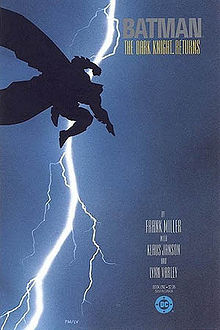
Batman Lives On
After the Batman series was canceled sales decreased drastically, but Batman lived on through comic books and graphic novels. Frank Miller's Batman: The Dark Knight Returns, which tells the story of a 50-year old Batman coming out of retirement in a possible future, reinvigorated the character. The comics sparked a major resurgence in the character's popularity.
The Batman comics garnered major attention in 1988 when DC Comics
created a 900 number for readers to call
to vote on whether Jason Todd, the second Robin, lived or died.
Voters decided in favor of Jason's death by a narrow margin of 28 votes. Robin dies in Batman: A Death In The Family.
Tim Burton's Batman
On July, 23 1989 Batman broke the opening weekend record set by Ghostbusters 2, grossing 43.6 million dollars. Batman was the first film to make over a 100 million dollars in the first ten days of release.The film is 42nd highest ever in North American ranks.
Although Indiana Jones and the Last
Crusade made the most money worldwide in 1989,
Batman was able to beat The
Last Crusade in North
America,and made a further $150 million in home
video sales.
Batman was criticized in some quarters for being "too dark". Many
observed that Burton was more interested in the Joker rather than
Batman in terms of characterization and screen time.
Comic book fans reacted negatively over the Joker murdering Thomas
and Martha Wayne. In the comic book, Joe
Chill is responsible. Writer Sam Hamm, who is a comic book fan, said
it was Burton's idea to have the Joker murder Wayne's parents. "The
Writer's Strike was going on," Hamm continued, "and Tim had the other
writers do that. I also hold innocent to Alfred letting Vicki Vale into
the Batcave,"
he reasoned. "Fans were ticked off with that, and I agree. That would
have been Alfred's last day of employment at Wayne Manor."
Batman (1989) Trailer
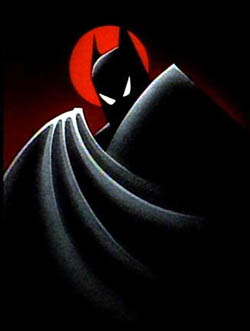
Batman: The Animated Series
Batman: The Animated Series, was the first Batman Cartoon (unless you count the 1966 series opening). The program was much more adult-oriented than previous typical superhero cartoon series. It was the first such cartoon in years to depict firearms being fired instead of laser guns (only one person has ever been actually depicted as shot; Commissioner Gordon in the episode "I Am the Night" was seen to have a gunshot wound after the firefight was finished), Batman actually punching and kicking the antagonists, as well as the existence of blood; in addition, many of the series' backgrounds were painted on black paper.
Batman Returns
Starring Micheal Keaton as Batman, Chris O' Donnel as Robin, Danny Devito as The Penguin, and Michelle Pfeiffer as Catwoman.
Burton originally did not want to direct a sequel because of his mixed
emotions toward the previous film. But, he received a script he liked and decided to go ahead with the film.
Batman Returns was released in America on June 19, 1992, earning
$45.69 million in 2,644 theaters on its opening weekend.
Animal rights groups started protesting the film after finding out that penguins would have rockets strapped on their backs. Richard Hill, the curator of the penguins explained that Warner Bros. was very helpful in making sure the penguins were comfortable. "On the flight over the plane was refrigerated down to 45 degrees," recalls Hill. "In Hollywood, they were given a refrigerated trailer, their own swimming pool, half-a-ton of ice each day, and they had fresh fish delivered daily straight from the docks. Even though it was 100 degrees outside, the entire set was refrigerated down to 35 degrees."
Batman Forever
Starring Val Kilmer as Batman, Jim Carry as The Riddler, Tommy Lee Jones as Two-Face, and Nicole Kidman as Dr. Chase Meridian.
The film had a change in tone compared to the previous installments,
more family-friendly, since Warner
Bros. considered that the previous film, Batman Returns, underperformed at the box
office due to its violence. Production was troubled, with many
actors considered for the main roles, and Kilmer entering in conflicts
with the rest of the crew. Batman Forever received mixed reviews
upon release, but outgrossed Returns with over $336 million
worldwide.
Joel Schumacher (director) had problems filming with Kilmer, whom he described as
"childish and impossible", reporting that he fought with various
crewmen, and refused to speak to Schumacher during two weeks after the
director told him to stop behaving in a rude way.
Schumacher also mentioned Tommy Lee Jones as source of trouble: "Jim
Carrey was a gentleman, and Tommy Lee was threatened by him. I'm tired
of defending overpaid, overprivileged actors. I pray I don't work with
them again."
Batman & Robin
Starring George Clooney as Batman, Chris O' Donnell as Robin, Uma Thurman as Poison Ivy, Arnold Schwarzenegger as Mr. Freeze, and Alica Silverstone as Batgirl.
Batman & Robin was released on June 20, 1997 in North America, earning $42,872,605 in its opening weekend,making it the third-highest opening weekend of 1997.However, the film rapidly declined with a 63% second week plunge. Many observers based the second week drop on negative word of mouth.
When comparing work on Batman Forever, Chris O'Donnell, who portrayed Robin, explained, "It just felt like everything got a little soft the second time. On Batman Forever, I felt like I was making a movie. The second time, I felt like I was making a kid's toy commercial."
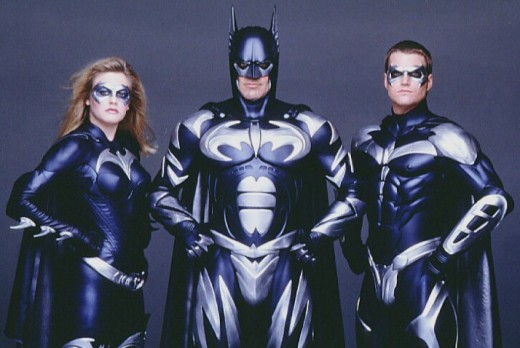
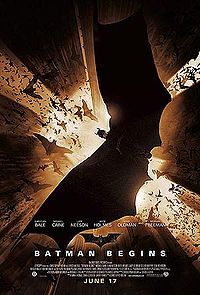
Batman Begins
After a series of unsuccessful projects to resurrect Batman on screen following the 1997 critical failure of Batman & Robin, Christopher Nolan and David S. Goyer began work on a film in early 2003 and aimed for a darker and more realistic tone, with humanity and realism being the basis of the film. The goal was to get the audience to care for both Batman and Bruce Wayne.
Batman Begins tells the story of Bruce Wayne and how he became Batman. It grossed $48 million in its opening weekend, eventually grossing over
$370 million worldwide.
The Dark Knight
The Dark Knight is the sequel Batman Begins, which everyone probably knows. The Dark Knight has been rumored to be cursed, since the movie's leading antagonist accidentally overdosed on sleeping pills and other medication, along with Morgan Freeman's car accident, and Christian Bale's assault arrest. Plus a young girl's decapitation by the Batman roller coaster at Six Flags Over Georgia.
The film was released on July 16, 2008 in Australia, on July 18, 2008 in North America, and on July 24, 2008 in the United Kingdom. Before its box office debut in North America, record numbers of advance tickets were sold for The Dark Knight. It was greeted with positive reviews upon release, and became only the second film to earn more than $500 million at the North American box office, setting numerous other records in the process. It is also the fifth highest grossing film worldwide, and one of only five films to earn more than $1 billion, worldwide
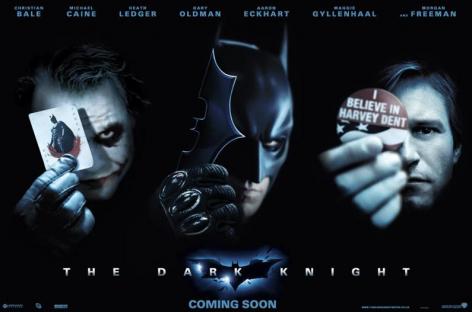
Batman's Most Famous Comic Books
Although most of the Batman movies have been highly rated and earned billions of dollars, no one can ever forget his roots. Those amazing comics kids and adults have both enjoyed for decades.
10. A Death In The
Family
1980s Batman readers had a serious problem with
Jason Todd, AKA the second Robin. With the character being widely
denounced as 'lame', the writers of the series found themselves under
pressure to do something about it. In an eerie premonition of the recent
Simon Cowell television reign, readers of the comic were given the
power to call a telephone line and vote as to whether Todd lived or
died.
Cue one horrible death, and a massive surge in the
popularity of the series.
The shocking thing is that a marketing
stunt spawned one of the defining moments in
Batman's history. The Dark Knight being emotionally destroyed by the
loss of his young apprentice, and thirsting for revenge he for the first
time seriously considers murder as an option.
The Batman is
supposed to be dark, and this incident steered the series firmly away
from the direction of garish colors and lighthearted romps. Oh, and it
also featured the Joker getting a job working for Ayatollah Khomeini of
Iran. Weird.
9. Gotham by
Gaslight
Seventy years is a long time for anyone to be
knocking around, so it's inevitable that at some point someone's going
to start really thinking outside the box. Hence the 'Elseworlds' series,
a number of stories in which Batman and other DC heroes are taken out
of their usual surroundings and placed in alternate universes or
timelines.
The first of these innovative stories was surely born
from one of those amazing three word pitches that usually get thrown
about in the wee hours after too much coffee and/or booze: 'Batman vs
Jack the Ripper'. Bear in mind that this is no Alien vs Predator
scenario- Bats is the greatest detective in the world, so this is a
proper Victorian mystery. And it's illustrated by Hellboy creator Mike
Mignola, so full of purdy pictures.
8. The Man Who Laughs
The Man Who Laughs takes its name from the 1928
silent film starring Conrad Veidt which inspired the look of the Joker
(check it out on youtube here-
creepy stuff).
Based around a race against time to end a brazen
killing spree, a rookie Dark Knight is horrified and disturbed by a
challenge far removed from your basic 'thugs with guns'. The plotline of
the one-shot story is taken directly from Batman #1, adding dark modern
elements to the classic first meeting of Batman & The Joker. So a
hefty bodycount and a great example of just how demented The Joker can
get. It's regarded as a natural followup to Frank Miller's Year One,
and thematically the closest you can get to Alan Moore's The
Killing Joke. More on them later.
7. Arkham Asylum
Considered by many to be one of the darkest
Batman stories out there, this short graphic novel stands out mainly
because of its unbelievable artwork.
Illustrated by Dave McKean,
famous for his Sandman covers & children's stories with Neil Gaiman
(Mirrormask, Coraline), whose distinctive and iconic imagery is lent to a
tale of the inmates taking over the asylum.
Just check out the
page pictured above (click to enlarge), and head out to buy it.
6. The Cult
In The Cult Batman comes up against Deacon
Blackfire, a crazy Charlie Manson type who may or may not be several
hundred years old. In a rare case of 'didn't see that coming', Bats gets
abducted and forced to join Blackfire's growing legions of mindless
slaves. With her protector out of action, and only Robin (pssh) to rely
on, Gotham city goes to hell quite quickly as the shit hits the fan big
time.
Notable for the display of weakness from our hero, who when
he gets a chance very nearly turns tail and buggers off. And as was the
thing with Batman in the 80's it pulls no punches with the ol'
ultra-violence. Which is fun.
5. Birth of the Demon
You'd be forgiven if until seeing Batman Begins
you had no idea whom Ra's Al Ghul was, but aside from the Joker he's
probably the Batman's greatest nemesis. A seven hundred year old
terrorist and sometime assassin, Ra's is no loon, but a calculating
genius who has a beef with humanity and a desire to see it wiped off the
face of the earth. Not pleased with Bruce Wayne's persistent thwarting
of his plans, or impregnating of his daughter (oh Bruce...), Ra's
indluges on many an occasion in beating the Bat to within an inch of his
life.
This story by Dennis O'Neil and Norm Breyfogle tells the
tale of how humanity earned Ra's' hatred, and throws in a classic
showdown between himself and Batman for good measure. Twisted and epic
with fantastic artwork, this is a one-stop shop for appreciating the
fact that Ra's Al Ghul is a vastly superior villain to the Penguin, the
Riddler and most of the better known faces in Batman's rogues gallery.
4. Batman: Year One
Batman was created by Bob Kane, but special
mention must go to Frank Miller for reinventing the character not once
but twice. In Year One Miller gives us his account of (guess) Batman's
first year of crimefighting, and to fantastic effect. The short 4-part
story hit the nail on the head to such a degree that it has become the
accepted 'true' origin of Batman, despite the fact that it was written
nearly fifty years after the character first appeared.
With
striking no nonsense artwork and a powerful take on the relationship
between Batman and Jim Gordon, it's a great read, and one of the few
Batman comics that is universally regarded as essential.
3. The Long Halloween
An epic, meaty read, The Long Halloween is the
kind of story Batman was created for. Set over the course of a year,
this sprawling murder mystery features a host of villains, with readers
kept guessing as our hero sifts through clues and suspects aplenty.
Writer Joseph Loeb has here played to all Batman's strengths as a
detective, while Tim Sale's cinematic artwork perfectly accents all the
noir elements of the story.
This story arc is notable for being
the definitive telling of Harvey Dent's journey to becoming Two-Face, a
tragedy which is expertly played out as a contrast to the bog-standard
'radioactive toxic waste' origin stories of lesser comic books.
The
Long Halloween is one of two Batman stories which has been singled out
by Christopher Nolan as a source of inspiration behind the Dark Knight,
so we can expect Aaron Eckhart's Harvey Dent to be a million miles
removed from Tommy Lee Jones' offering. Which, clearly, is a good thing.
Shame on you, Joel Schumacher.
2. The Dark Knight Returns
The rebirth of Batman, DKR is the moment where
Frank Miller returned Batman to the shadows, lending a psychological
edge to the series that had been absent for too long. In graphic novel
format, this offering deserves to be counted alongside Watchmen as a
truly great work of literature.
Set in the near future, an aging
Batman has retired and the world is without superheros. Superman is a
government patsy, and Gotham is terrorised by a gang of cyber-punks
called Mutants. Events conspire to bring the Bat out of retirement, and
our hero returns to struggle against the Mutants, his own age, and
cold-war politics.
It's a vast piece of work, original and fresh-
offering an unparalleled take on the character of Batman, and painting
the world of Gotham & Metropolis as an ominous vision of our own.
On
a cerebral scale there's nothing quite like DKR in the Batman world.
And on a sheer comic-book-fun scale: it features an almighty showdown
between Batman & Superman. Enough said.
1. The Killing Joke
The Killing Joke is possibly the greatest Batman
story ever told. Written by the most acclaimed comic-book writer of all
time, Alan Moore (Watchmen, V for Vendetta, From Hell...), this single
issue story pits Batman against the Joker in a match that is both
enthralling and chilling. The Joker has never been more twisted, and the
battle between the two characters is tinged with madness and violence
before reaching it's climax. At the same time, Moore takes the reader
through the tragic origins of Batman's arch nemesis in a telling that,
like Year One, has become the generally accepted version of the story.
With
stunning artwork by Brian Bolland, and writing from Moore that's second
to none, The Killing Joke has all the right ingredients to create a
Batman story that's as close to perfect as you're gonna get. Thankfully,
this is the version of The Joker that Christopher Nolan has chosen to
bring to the screen for the Dark Knight: a demented and unstable
murderer; and if Heath Ledger's portrayal is in any way close to the
mark we're sure to be treated to an unforgettable incarnation of one of
the Comic-Book world's greatest villains.

